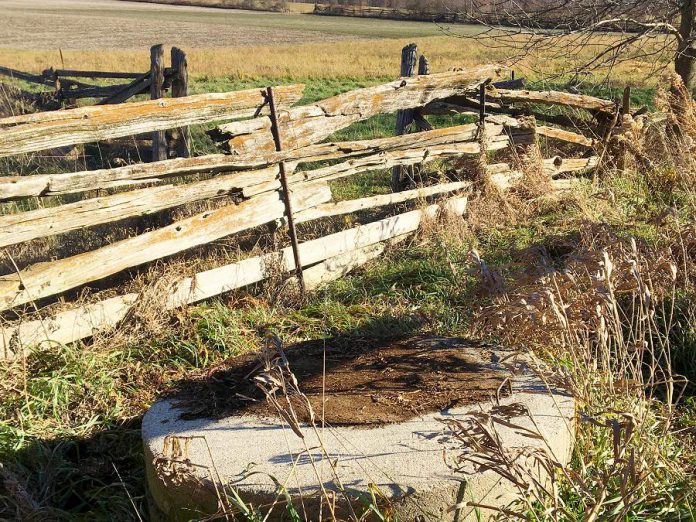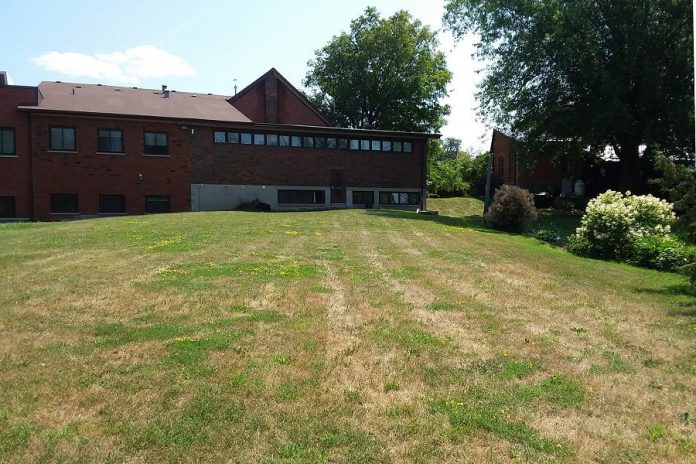
If you live in Peterborough, the water flows from your taps thanks to the Peterborough Utilities Group. When the toilet flushes or the tub drains, the City of Peterborough takes care of your wastewater.
The situation is different for rural communities.
In the townships around the city, the property owner is responsible for water and wastewater management. Most rural properties rely on a well for daily water usage and a septic system for wastewater.
In the last several months, I’ve written articles on water and wastewater treatment in the urban setting. This week, I explore these topics from a rural perspective.
To learn more about wells and septic systems, I connected with Lindsay Burtt, a building official with the Township of Douro-Dummer.
To begin my journey, I asked Burtt about wells. He explained that there are two main types: the dug well and the drilled well.
“Drilled wells are more common, and are deeper and easier to install,” says Burtt. “This is done with a driller rig on a truck. Dug wells are created by excavating until you hit water, often a spring. Dug wells are usually shallower at 20 to 30 feet (6 to 10 metres) deep.”
Installing a well is not as simple as digging or drilling. You need to get permits and follow protocols to install a well. To ensure it’s done right, says Burtt, property owners should hire a licensed well installer.

As their water source, both dug and drilled wells rely on groundwater — water that exists underground naturally between cracks and spaces in the soil, sand, and rock.
In times of drought, such as the Level 2 drought we experienced this summer, wells can run dry. When this happens, Burtt explains, “rural homeowners may need to buy their drinking water. Or, they may have a secondary system, like a cistern, to provide water.”
When setting up a cistern, location is important. To keep cisterns from freezing, they are best placed in a basement or buried in the ground.
“There is no mandatory requirement for homeowners to test their well water,” Burtt says. “If they want their water tested, that is their individual responsibility.”
Still, Burtt recommends testing well water at least once a year. For shallow wells, where bacterial issues can occur, he recommends treating water through an ultraviolet (UV) filter or through chemical chlorination.
At the other end of the household is the management and treatment of wastewater.
“The main type of septic system is called a Class 4,” Burtt says. “It features a septic tank and leaching bed. The septic tank has two compartments: the front chamber (where the wastewater enters and solids settle) and the back chamber, which holds effluent (the liquid wastewater).”
“The back chamber has an outlet that allows the effluent to flow into the leaching bed (or drainfield). Once the effluent reaches the leaching bed, it is treated through layers of sand and stone, and eventually soaks into the ground.”
In all parts of the septic system, bacteria play a key role. They settle out the solids in the front chamber, and treat the effluent in the back chamber and leaching bed. If there aren’t enough bacteria, then septic system failure can occur, causing raw sewage to back up into the residence (yuck!).
To avoid problems, rural property owners should clean their leaching bed filter once a year and have their septic tanks pumped out every three to five years, depending on household usage.
Through the Township of Douro-Dummer’s septic re-inspection program introduced in 2020, Burtt and his colleagues help rural property owners maintain their septic systems and prevent failures.
“The vast majority of property owners are maintaining their septic systems effectively,” Burtt observes. “Only a very small number of septic systems are causing issues to infrastructure or the environment.”

These issues can be a sewage backup, as mentioned previously, or they can be caused by E. coli. Although E. coli bacteria naturally exists in the guts of humans and other warm-blooded animals, when they leak into waterways and are ingested, they can cause illness.
With proper care and a keen eye, a property owner can ensure their septic bed stays healthy and functions well. For example, if you notice that a wet area has appeared on your lawn above the leaching bed, it could indicate that the bed is starting to plug and needs attention.
Watch too that trees aren’t planted near (nor grow into) septic tanks or leaching beds. Their roots can interrupt the septic system. For more advice on looking after septic systems, explore the many useful resources provided by the Peterborough-based Ontario Onsite Wastewater Association at www.oowa.org.
Now that I’ve spent time learning about wells and septic systems with Lindsay Burtt of the Township of Douro-Dummer, I have a new understanding of what it takes to install and look after them.
While many city dwellers give nary a thought to water and wastewater, our rural neighbours ensure the health and safety of their households by taking on the responsibility themselves.
To Lindsay Burtt and his colleagues, and to Peterborough’s water and wastewater treatment staff, I raise a glass in admiration and appreciation.


























